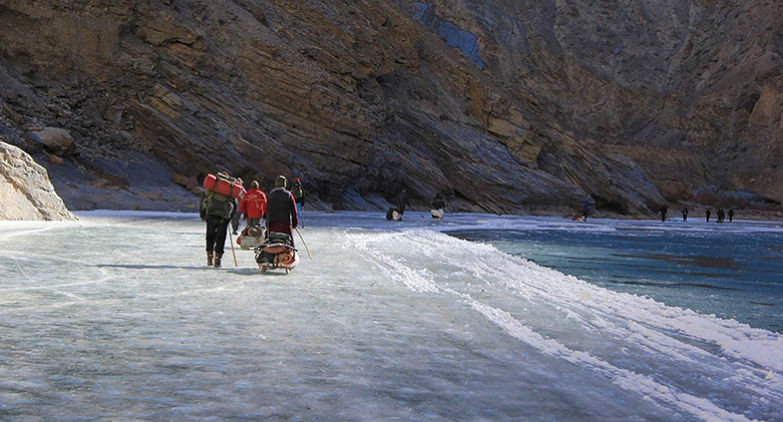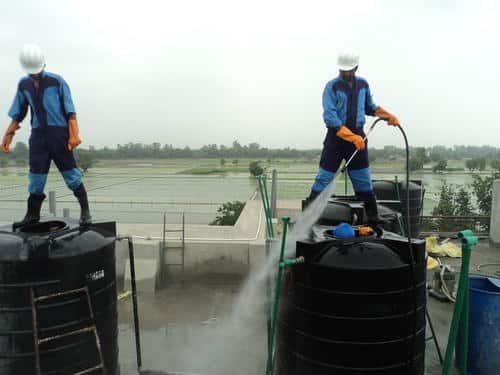introduction
Chadar Trek is an extremely glamorous trek for adrenaline junkies who prefer to go all in or go home. In recent years, trekking in Ladakh has become extremely popular, and the Chadar trek has emerged as a favorite among Indians and travelers from other parts of the world. The first time I attempted Chadar Trek was eight years ago. Twenty times more people now visit this tiny gorge than in those days. Depending on the solid formation of Chadar, the ice carpet, the trek is only open for 45 to 50 days, usually from January 1 to February 20.
Imagine walking alongside a stream that is slowly freezing or melting as you walk alongside it as you walk across frozen sheets of ice with mountains on one side and snow-covered mountains on the other. And even though that seems fascinating, look around, up, and ahead of you; to gaze out to sea at awe-inspiring beauty. This is the Chadar Trek, also known as the Frozen River Trek, but 100 times more difficult.
Additionally, the All Ladakh Tour Operators Association (ALTOA) and the Leh government have developed safe operating guidelines. Because it has been implemented with strict adherence to rules and regulations, the trek will run safely. Therefore, train your eyes below for a ground-level Chadar Trek experience. Find out everything you need to know about the temperature, where to stay, the trek itself, the food, and some essential expert advice to make the trek go smoothly.
- Arrival, acclimatization, and permits—three days
- actual trek—five days
- return to Leh—one day; and departure
Arrival and time to rest
We traveled from Delhi to Leh in a group of eight, including me, on an early morning flight. Since airport pick-up was not included in the package, we independently took a cab to the guest house, which we reached around 08:00 p.m. When we got to the guest house, we were asked to finish the registration process, which required signing an indemnity form, submitting three passport-sized photos, and filling out an insurance form. A copy of the identity and address proof (such as a voter’s card, passport, or Aadhar card) was also required.
After breakfast and a cup of tea, some of us wanted to rest because we were having a little headache, so we went to our rooms. We were all awakened by 1400 for lunch. Due to the fact that the food in Leh was not included in the package we selected, we paid extra to have good vegetarian food delivered to our room. Due to nausea and a severe headache, my partner and the other two guys decided not to eat lunch. They were asked to take a break and given warm water.
Walk for acclimatization
We were all healthy and showed no signs of AMS after waking to a fresh morning. After a delicious breakfast, a lengthy and comprehensive briefing was given that covered important topics like how to quickly acclimatize, how to protect against the elements, how to layer clothes, the Leave No Trace policy, women’s hygiene and safety, and what to pack for the trek.
. After taking a few pictures there, I went back to the Leh market to get lunch and make other purchases. Some of us even had to take photos because they weren’t carrying any, while others went to get gumboots or chocolates. After that, we made the decision to have dinner in the guest house, and we went to sleep soundly.
The third day is permit day.
The present morning after breakfast we as a whole began our stroll to Spasm (The travel industry Data Center) in Leh. We arrived at TIC around 1000 hours later. First, we had to show the insurance company (ASC 360) our boarding pass and the insurance form we had filled out on Day 1 that was 100% accurate and complete. They gave us a medical form, which we had to fill out and have the doctor and the medical team in the room next to us sign after they checked and entered all of our information into their computer. We must pay them Rs once we enter the medical room. 200 rupees for the medical exam.
They will first check your blood pressure and oxygen level, and once you meet the doctor, he will ask you a few lighthearted questions about your previous health history. You will be fine if everything goes according to plan! It covers everything from emergency medical examinations to evacuation. You now go to the ALTOA desk with the insurance card and a list of everyone in your group. After paying the appropriate fees, they give you the following permits.
Pro tips: Make sure you have a pair of well-worn,
- Waterproof hiking boots Gumboots are a lifesaver, but they are not an alternative to hiking boots.
- Layering is the key to success. Clamps should not be used.
- To be used correctly, a good experience is required.
- Alternatively, you could use easily accessible “microspikes.” Trekking poles can be very helpful on slick ice, but don’t expect the same level of service because life there is hard.
- The people who serve you are also people;
- They try to keep you safe and comfortable, but don’t expect luxury.
- The first two to three days are needed to get used to the current cold. Avoid heating sources and dress appropriately.




